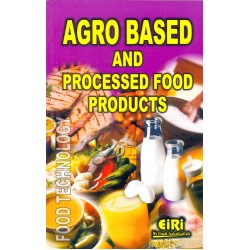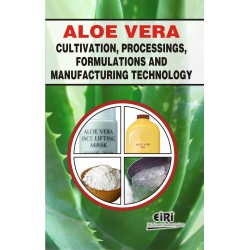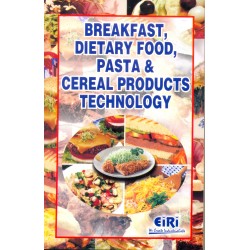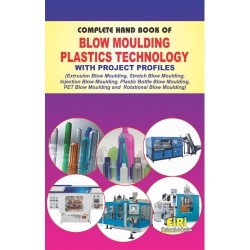technology of plastic additives with processes and packaging (hand book)

- More than 40 years of experience
- Managed by expert industrial consultants
- ISO 9001-2015 Certified
- Registered under MSME, UAM No: DL01E0012000
- 24/5 Research Support
Get your quesries resolved from an industry expert. Ask your queries before report or book purchase. - Custom Research Service
Speak to the our consultant to design an exclusive study to serve your research needs. - Quality Assurance
All reports are prepared by highly qualified consultants & verified by a panel of experts. - Information Security
Your personal & confidential information is safe & secure.
Making things out of plastics is like playing a game with molecules. The aim is to re-organise them into new shapes without their changing colour, sticking to the mould, or doing anything that could spoil the finished article. Additives help with all these problems. In fact, processing plastics without additives is virtually impossible. Consider the range of plastics available and the wide variety of plastic objects in every day use. From fizzy drinks bottles and carrier bags to window frames and computers, it is clear that there are many different ways of forming plastics. Most of these processes involve melting polymer powder or granules inside a heated tube. This ‘melt’ is forced through a shaped die, injected into a mould, or rolled or blown into flat film. The ease with which this is done depends on the physical and chemical properties of each plastic material, and can be improved through the use of certain additives known as process aids. Process aids become liquid during the moulding process and form a liquid around colour particles so that they mix better. Other additives make the individual polymer particles adhere more to each other inside the tube so that they melt quicker. This means that the moulding temperature can be lower which saves energy and prevents or minimises heat damage to the plastics. Pigments are tiny particles which have to be evenly mixed into the polymer in its molten state. Colourists specialise in scientifically devising shades suitable for all types of situations. Through a skilful manipulation of additives, plastics components can be colour matched with parts made from other materials such as wood, metal and fabrics, cars radios and kitchen appliances all use this technique. An increasing amount of plastics is found in cars today. These man made materials are often selected for their safety value. Dashboards and bumper not only have to look stylish and work well, but must also prevent injury by absorbing and dissipating the force of any impact. The additive type used in this case would be an impact modifier. Pigments are additives usually chosen to make plastics look more attractive, but they can also increase the safety factor, such as the special colour-coding for electrical wiring. Designer often use colours to accentuate the controls on machines and day-glow pigments prevent many road accidents: runner and cyclists wear reflective fabrics and strips, while road, rail and building site workers can easily be seen in their fluorescent helmets and jackets.
The book contains 34 chapters on various aspects on Technology of Plastic Additives with Processes and Packaging, i.e. Plastic Additives: An Introduction, Organic Peroxides, Plasticizers, Polyurethane Catalysts, Fillers, Specialty Alloys, Maximizing Performance Using Copper Alloys, Structurally Enhanced Plastics with Filler Reinforcements, Cellular Plastic Additive, Environmentally Friendly Additives for Plastics, Polyimide Processing Additives, Storage-stable Plastics Additives, Liquid Colourant/Additive Concentrates for Plastics, Hydrophilic Additives, Hydrophobicizing Additives, Asphalt Additive, Anti-treeing Additives, Rubber Additive, Waste Plastic Additive for Asphalt, Impregnation of Plastic Substrates with Photo chromic Additives, Low-dust Granules of Plastic Additives, Mixed Ester Plastic Additive, Fire-retardant Plastics with Glycoside Additive, Additive for Papermaking, Degradable Plastics Containing Dual-function Additive System, Packaging for Plastics Additives, Low Visibility Laser Marking Additive, Preparation of Plastic Extrudate Containing an Additive, Injecting Liquid Additives into Plastic Extruders, Method of Preparing Moldable Plastic and Additive Agents, Engineering Plastics and Additive, Spray Application of plastics Additives to Polymers, Machine for Producing Additive Containing Plastic
Articles, Additive Metering Apparatus for Plastic Processing Machine
Plastic Additives: An Introduction
Additives Make Plastics
Look good
Additives Save Money
Additives Make Plastics Safe and Sound
Additives Make Plastics Clean And Healthy
Additives Make Plastics Work Longer
Additives Respect The Environment
Organic Peroxides
Types
Dialkyl Peroxides
Diacyl peroxides
Hydroperoxides
Ketone peroxides
Peroxydicarbonates
Peroxyesters
Process
Peroxyketals
Raw Materials
Suppliers
Trends and Forecasts
Plasticizers
Description
Phthalate Esters
Preparation of Typical
Commercial Cellulose
Acetate Phthalate
Aliphatic Esters
Epoxy Ester
Phosphate Triesters
Trimellitates
Polymer Plasticizers
Methods
Other Plasticizers
Suppliers
Trends and forecasts
Polyurethane Catalysts
Description
Tertiary aliphatic amines
Preparation
Reductive amination of 6- undecanone with
dimethylamine using a nickel catalyst
Organometallic compounds
Preparation
Process
Suppliers
Trends and forecasts
Fillers
Why are Fillers Used?
Glass Fillers Explained
Color Basics
Color Developments for Bioplastics
Special Effects in the
Consumer Market
Infrared Reflective Pigments
Regulatory Compliant Colorants
Specialty Alloys
Aluminum
Brass
Bronze
Other Grades include
Copper
Hastelloy® C-276
Haynes 242 Alloy
Inconel® - nickel-chromium iron
Invar 36 Alloy
Kovar Alloy
Molybdenum
Nickel 200, 201
Tantalum and Ta-Alloys
Titanium
Tungsten
Maximizing Performance Using Copper Alloys
Copper Alloys for Conveying Plastic In Injection Molds
Sprue Bushing Radius
Sprue Bushing Taper
Sprue Retention and Anti- Rotation
Standard Sprue Bushing Availability
Conventional Injection Mold Runner Systems
Injection Mold Runner Bars
Runner Sizing
Formulas for calculating the area of the runner
Runner Bar Mating
Runner Bar Cooling
Sprue Puller
Structurally Enhanced Plastics with Filler Reinforcements
Particle Surface Characteristics
Particle Hardness and Toughness
Cellular Plastic Additive
Environmentally Friendly Additives for Plastics
Preparation of Environmentally Friendly Additive for Plastics
Effect of Additive for Plastics in Absorbing Hydrochloric Acid Gas
Effect of Absorbing Hydrochloric Acid Gas of PE Bags Comprising
Environmentally Friendly Additive for Plastics
Polyimide Processing Additives
Preparation of the 422 Copoly(amic acid) Base Resin
Imidization of the 422 Copoly(amic acid) Base Resin
Preparation of LARCTPI(M) Polyimide Film
Preparation of LARCTPI(H) (3,3’4,4'-Benzophenonetetracarboxylic
Dianhydride 3,3'-Daiminobenzophenone
Polyimide) Solution and Film
Preparation of the 2,2-Bis[4-(3,4-dicarboxyphenyl)]-hexafluoropropane
Dianhydride-2,2-Bis[4-(4-aminophenoxy)-phenyl]
hexafluoropropanePoly(amic acid)
[6F-BDAF, Poly(amic acid)]
Endcapping of the 6F-BDAF, Poly(amic
acid) Resin 5 with Phthalic Anhydride
Preparation of the Pyromellitic Dianhydride-Aniline
Di(amic acid) Additive Di(NMP) Complex [PMDA-An.
2NMP, Di(amic acid)]
Preparation of the 3,3’4,4'- Benzophenonetetracarboxylic
Dianhydride- Aniline Di(amic acid) Additive [BTDA-An, Di(amic acid)]
Preparation of the Phthalic Anhydride-Aniline Amid
Acid Additive [PA-An, Amic Acid]
Preparation of the 4,4'- Diaminodiphenylmethane- Phthalic
Anhydride Di(amicacid) Additive [4,4'-DADPM-PA, di(amic acid)]
Preparation of the 3,3'- Diaminodiphenylmethane- Phthalic
Anhydride Di(amic acid) Additive [3,3'- DADPM-PA, Di(amic acid)]
Preparation of the 3,3',4,4'-Oxydiphthalic Anhydride-Aniline Di(amic acid)
Additive [ODPA-An, di(amic acid)]
Preparation of the 4,4'-Bis (3,4-dicarboxyphenoxy) diphenyl sulfide
dianhydride-Aniline Di(amic Acid) Additive [BDSDA-An,di(amic acid)]
Preparation of 1,4- Phenylenediamine-Phthalic Anhydride Di(amic acid) Additive
[p-PDA-PA, di(amic acid)]
Preparation of the 2,2-bis [4-(4-aminophenoxy) phenyl]-hexafluoropropane
Phthalic Anhydride Di(amic acid) Additive [BDAFPA, di(amic acid)]
Preparation of Additional Amic Acid Additives, Endcapped with Aniline
(An) or Phthalic Anhydride (PA)
Preparation of the NPhenylphthalimide Additive
Preparation of the N,N’-Diphenylpyromellitimide
Additive [PMDA-An, diimide]
Preparation of the N,N’- Diphenyl-4,4'- carbonyldiphthalimide
Additive [BTDA-An, diimide]
Preparation of the N,N’- Diphenyl-4,4'(2,2- hexafluoropropyl)-
diphthalimide Additive [6F-An, diimide]
Preparation of the N,N’- Bis(3-trifluoromethylphenyl)-
4,4'-2,2- hexafluoropropyl) diphthalimide Additive
[6F-3,3'-TFMAn, diimide]
Preparation of the N,N’- Diphenyl-4,4'-
oxydiphthalimide Additive [ODPA-An, diimide]
Preparation of the N,N’- Bis(4-benzoylphenyl)-
4,4'-(2,2-hexafluoropropyl)- diphth alimide
Additive [6F-4-ABP, diimide]
Preparation of the N,N’- (Methylenedi-1,4-
phenylene)diphthalimide Additive [p-MDA-PA, diimide]
Preparation of the N,N’(Methylenedi-1,3-
phenylene)diphthalimide [m-MDA-PA, diimide]
Preparation of the N,N’-[[2,2- bis[4-(4-phenoxy)
phenyl]hexafluoropropyl]] diphthalimide
Additive [BDAFPA, diimide]
Preparation of Additional Imide Additives
Endcapped with Aniline (An), Phthalic Anhydride
(PA), or Miscellaneous Endcaps
The thermal imidization of certain amic acid additives
Reprecipitation and Imidization of the
422 Copoly(amic acid) Base Resin
Polyimide Composition of the 422 Copolymer
Base Resin Containing 0.05% by wt. of the
PMDA-An Di(amic acid) Additive
Polyimide Composition of the 422 Copolyimide
Base Resin Containing 0.50% by wt. PMDA-AN Diimide
Polyimide Composition of the 422 Copoly(amic
acid) Base Resin Containing 2.5% by wt. of the PMDA-AN
Di(amic acid) Additive
Polyimide Composition of the 422 Copoly(amic
acid) Base Resin Containing 5.0% by
wt. of the PMDA-AN Di(amic acid) Additive
Preparation of the 422 Copolyimide Base
Resin Containing 5.0% by wt. of PMDA-An Diimide Additive
Polyimide Composition of the 422 Copoly
(amic acid) Base Resin Containing 2.5% by wt. of the BTDA-AN Diimide Additive
Polyimide Composition of the 422 Copolyimide
Base Resin Containing 5.0% by wt. of Napthalene as the Additive
Polyimide Composition of the 422 Copoly
(amic acid) Base Resin Containing
2.5% by wt. of the p-PDA-PA, Di(amic acid) Additive
Polyimide Composition of the 422 Copoly (amic acid) Base
Resin Containing 5.0% by wt. of the
p-PDA-PA Di(amic acid) Additive
Polyimide Composition of the 422 Copoly(amic acid)
Base Resin Containing 2.5% by wt. of the 4,4'-
ODA-PA Diimide Additive
Polyimide Composition of the 422 Copolyimide Base Resin
containing 5.3% by wt. of the 6F-An Diimide Additive
Polyimide Composition of the 422 Copolyimide Base Resin
Containing 15% by wt. of the 6F-An, Diimide Additive
Polyimide Composition of the 422 Copolyimide
Base Resin Containing 5.3% by wt. of the 6F-TFMAn Diimide Additive
Film Formation from a Composition of LARCTPI(M) and 3.0% by
Weight of the BTDAAn Di(amic acid) Additive
Film Formation From a Composition of LARCTPI (M) and 3.0% by Weight of the 3,3'-
DABP-PA Di(amic acid) Additive
Extended Cure of a LARCTPI(M) Film Containing
3.0% by Weight of the 3,3'-DABP-PA Di(amic acid) Additive
Film Formation From a Composition of LARCTPI(M) and 5% by
Weight of the 3,3'-DABP-PA Di(amic acid) Additive
Film Formation From a Composition of LARCTPI(M) and 10% by
Weight of the 3,3'-DABP-PA Di(amic acid) Additive
Film Formation From a Composition of LARCTPI(
M) and 3.01 by Weight of the PMDAAn.
2NMP Di(amic acid) Additive
Extended Cure of a LARCTPI(M) Film Containing
3.0% by Weight of the PMDA-An.2NMP
Di(amic acid) Additive
Film Formation From a Composition of LARCTPI(H) and 3.0% by Weight of the BTDAAn
Di(amic acid) Additive
Film Formation From a Composition of LARCTPI(
H) and 5.0% by weight of the BTDA-An
Di(amic acid) Additive
Film Formation From a Composition of LARCTPI(
H) and 3.0% by Weight of the 3,3'-
DABP-PA Di(amic acid) Additive
Film Formation From a Composition of LARCTPI(H) and 3.0% by Weight of the PMDAAn.
2NMP Di(amic acid) Additive
Extended Cure of a LARCTPI(H) Film Containing
3.0% by Weight of the PMDA-An.2NMP
Di(amic acid) Additive
Film Formation From a Composition of LARCTPI(H) and 5.0% by
Weight of the 6FDAAn Di(amic acid) Additive
Film Formation From a Composition LARCTPI(H) and 5.0% by Weight of the 3,3'-
DDSO2 PA Di(amic acid) Additive
Preparation and Characterization of a
LARC-TPI Polyimide Graphite Composite
Modified with a PMDAaniline Di(amic acid) Additive
Storage-stable Plastics Additives
Liquid Colourant/Additive Concentrates for Plastics
Hydrophilic Additives
Synthesis of the Additives
Additive 1
Additive 2
Additive 3
Additive 4
Wetting Test
Hydrophobicizing Additives
Method A :Dispersion 1
Method B: Dispersion 2
Results of the Emulsification Experiments
Method 1 :Powder 1
Method 2: Powder 2
Method 3: Powder 3
Method 4 :Powder 4
Comparative Method 5: Powder C5
Method 6: Powder 6
Method 7: Powder 7
Method 8: Powder 8
Method 9: Powder 9
Comparative Method 10:
Powder C10
Comparative Method 11: Powder C11
Asphalt Additive
Method 1~20 and Comparative Methods 1~14
Methods 12~13: R
contains one branched
methyl group
Anti-treeing Additives
Process 1
Process 2
Process 3
Process 4
Process 5
Rubber Additive
Preparation Of Methods
Effects on Rubber Processability
Effect on Tack
Other Parameters
Physical properties of the rubber compounds
Other products
Waste Plastic Additive for Asphalt
Additive Composition Methods
Asphalt Composition Methods
Impregnation of Plastic Substrates
with Photo chromic Additives
Process 1
Process 2
Process 3
Low-dust Granules of Plastic Additives
Method 1
Method 2
Method 3
Method 4
Method 5
Method 6
Method 7
Method 8
Mixed Ester Plastic Additive
Method 9
Method 10
Method 11
Fire-retardant Plastics with Glycoside Additive
METHODS
Additive for Papermaking
Problems to be Solved by the Method
Method 1
Methods 2-8 and comparative methods 1-11
Use methods 1-6 and comparative use methods 1-9
Use method 7 and 8 and comparative method 10 and 11
Effect of the method
Degradable Plastics Containing Dualfunction Additive System
Method 1
Method 2
Method 3
Method 4
Packaging for Plastics Additives
Low Visibility Laser Marking Additive
Preparation of Plastic Extrudate Containing an Additive
Injecting Liquid Additives into Plastic Extruders
Method of Preparing Moldable Plastic and Additive Agents
Uncolored Plastic Pellets
Colour Concentrate Pellets
Classification Methods
Other Treatments or Additives Besides Coloring Agents
Engineering Plastics and Additive
Process 1
Process 2
Process 3
Spray Application of plastics Additives to Polymers
Listing of Chemicals and Equipment
Method 1: Solubility of CO2 in Carrier Liquid 1
Method 2: Solubility of CO2 in Various Liquids at Room Temperature
Method 3: Viscosity Reduction Trial with a Mixture of Stabilizers
Method 4: Spraying Trials
Method 5: Additional Spraying Trials
Method 6: Demonstration of Low Average Flow Rate Using Intermittent Spraying
Method 7: Demonstration of Particle Size Reduction of Stabilizer 2 Upon Spraying
Method 8: Particle Size Reduction Trial of Antioxidant 1 Upon Spraying
Method 9: Particle Shearing in a Power Mixer
Method 10: Demonstration of Slurry Spraying in a Continuous Feed, High Pressure Spray
Method 11: Determination of CO2 Solubility in Carrier Liquid 1
Method 12 : Effect of Varying the Amount of CO2
Method 13: Particle Coating/Extrusion Trials
Machine for Producing Additive Containing Plastic Articles
Method 1
Method 2
Additive Metering Apparatus For Plastic Processing Machine
Project Profile of an Additive
Process Technology
How to Make Project Report?
Detailed Project Report (DPR) includes Present Market Position and Expected Future Demand, Technology, Manufacturing Process, Investment Opportunity, Plant Economics and Project Financials. comprehensive analysis from industry covering detailed reporting and evaluates the position of the industry by providing insights to the SWOT analysis of the industry.
Each report include Plant Capacity, requirement of Land & Building, Plant & Machinery, Flow Sheet Diagram, Raw Materials detail with suppliers list, Total Capital Investment along with detailed calculation on Rate of Return, Break-Even Analysis and Profitability Analysis. The report also provides a birds eye view of the global industry with details on projected market size and then progresses to evaluate the industry in detail.
We can prepare detailed project report on any industry as per your requirement.
We can also modify the project capacity and project cost as per your requirement. If you are planning to start a business, contact us today.
Detailed Project Report (DPR) gives you access to decisive data such as:
- Market growth drivers
- Factors limiting market growth
- Current market trends
- Market structure
- Key highlights
Overview of key market forces propelling and restraining market growth:
- Up-to-date analyses of market trends and technological improvements
- Pin-point analyses of market competition dynamics to offer you a competitive edge major competitors
- An array of graphics, BEP analysis of major industry segments
- Detailed analyses of industry trends
- A well-defined technological growth with an impact-analysis
- A clear understanding of the competitive landscape and key product segments
Need Customized Project Report?
- Ask for FREE project related details with our consultant/industry expert.
- Share your specific research requirements for customized project report.
- Request for due diligence and consumer centric studies.
- Still haven't found what you're looking for? Speak to our Custom Research Team
About Engineers India Research Institute:
Note: We can also prepare project report on any subject based on your requirement and country. If you need, we can modify the project capacity and project cost based on your requirement.
Our Clients
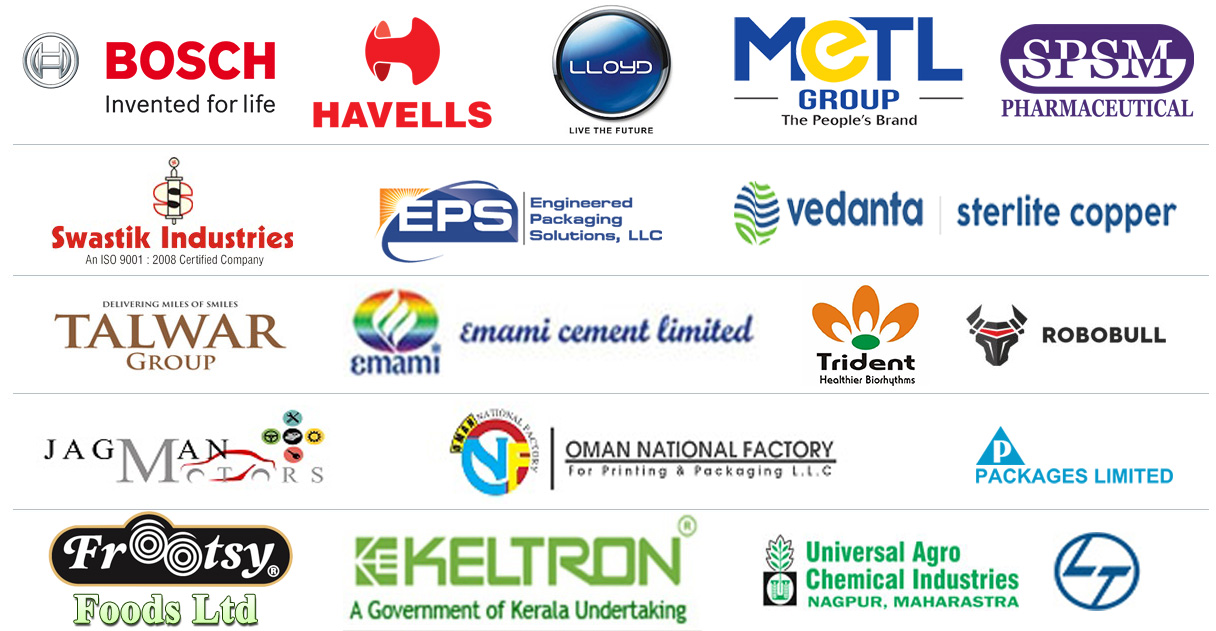
Our Approach
- Our research reports comprehensively cover Indian markets (can be modified as per your country), present investigation, standpoint and gauge for a time of five years*.
- The market conjectures are produced on the premise of optional research and are cross-accepted through associations with the business players
- We use dependable wellsprings of data and databases. What's more, data from such sources is handled by us and incorporated into the report
Why buy EIRI reports?
- Our project reports include detailed analysis that help to get industry Present Market Position and Expected Future Demand.
- Offer real analysis driving variables for the business and most recent business sector patterns in the business
- This report comprehends the present status of the business by clarifying a complete SWOT examination and investigation of the interest supply circumstance
- Report gives investigation and top to bottom money related correlation of real players/competitors
- The report gives gauges of key parameters which foresees the business execution






















